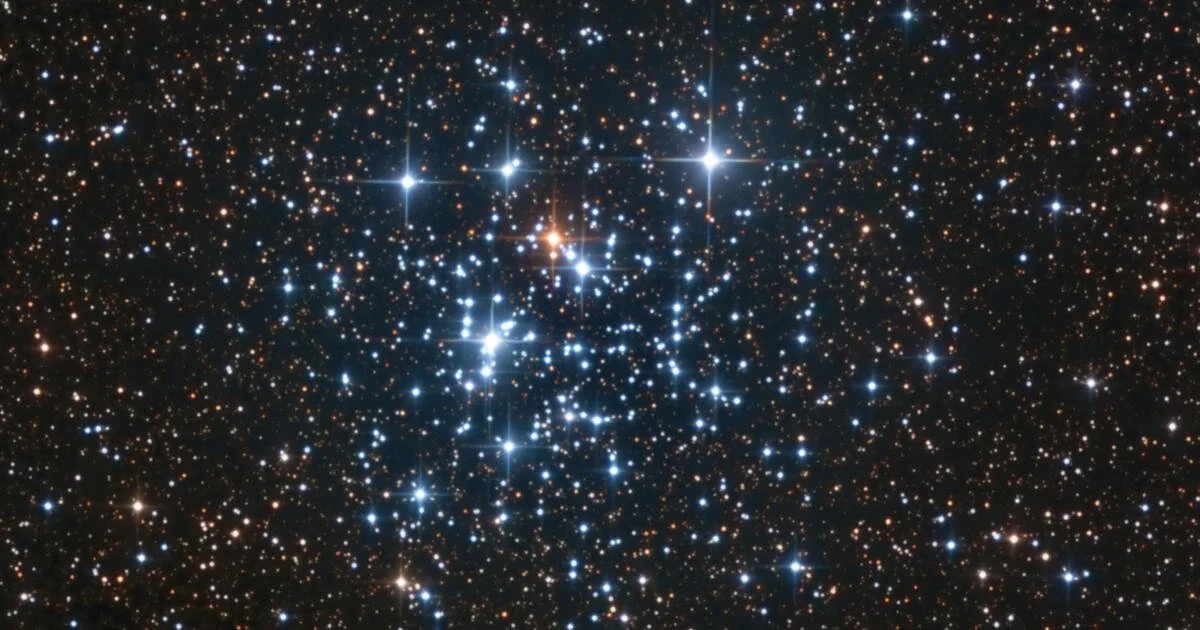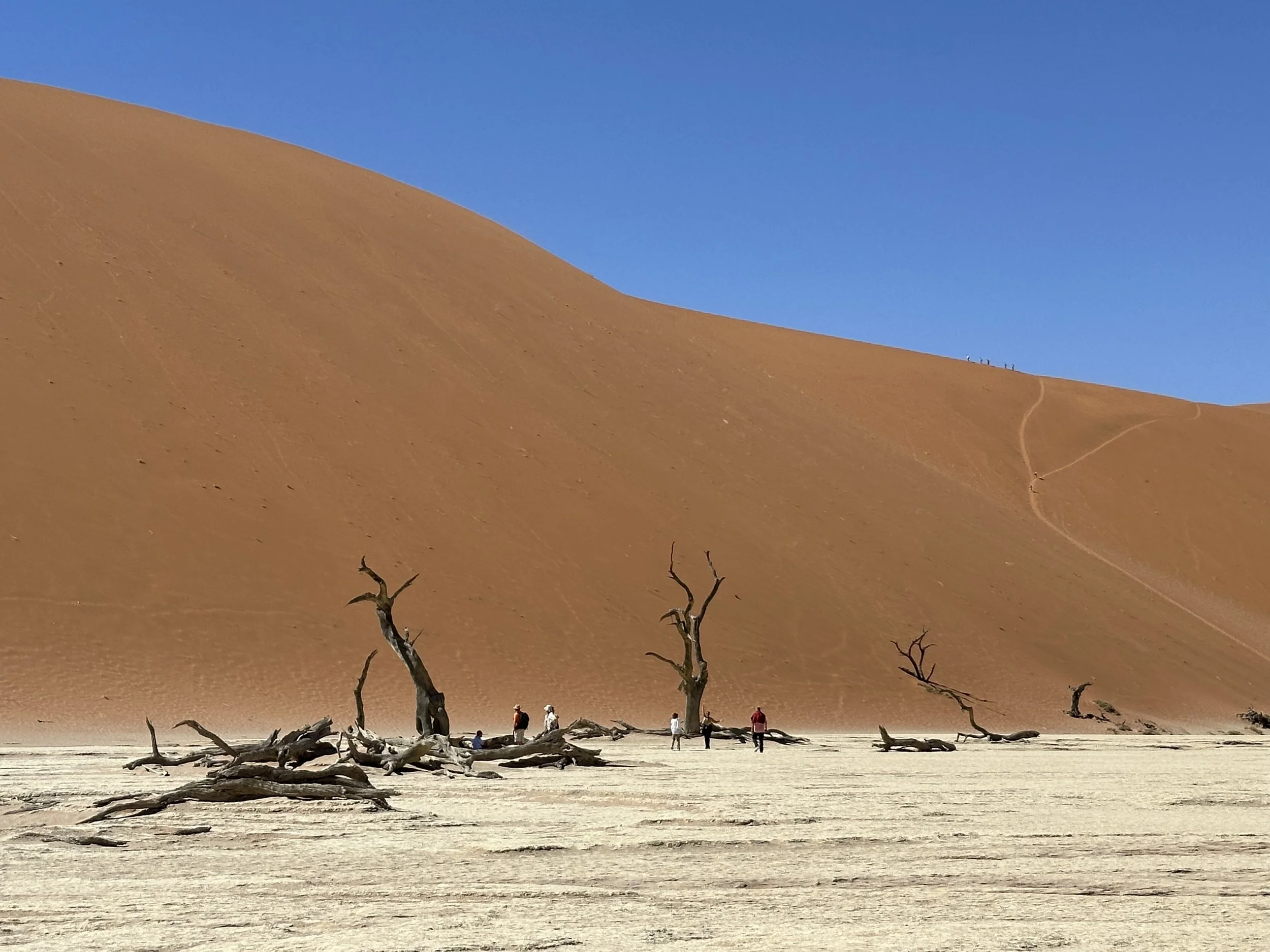This is the final installment of the Cocktail Blog series from the two month astrophotography trip to Namibia, Africa at the &Beyond Resort near Sossusvlei. In this blog from the pool, I show some drone views from the e-bike and ATV Ride activities, show my fix for the missing panel in the Milky Way mosaic photo and pay tribute to some of the great staff here who have served me so well over the last nine weeks. This truly has, been the trip of a lifetime!
Finally! It’s the highly anticipated (salivated?) Food Blog that I’ve been working on for weeks! They really have a fantastic chef and kitchen staff here at &Beyond so I show off a bit of what they can do, and I also interview Franz, the Wine Steward. You better grab a snack before sitting down to watch this…
I’m wrapping up things here in Namibia, Africa with another cocktail blog where I talk about the problems with doing multi-panel mosaics but also have some successes, am flabbergasted that we had an actual cloudy night, and show off some of the images that are just now getting processed.
In tonight’s Cocktail Blog I detail the progress on the twelve panel astrophoto mosaic of the Large Magellanic Cloud, and for all those people over the years who have told me to, “Take a hike!”, well I did! Oh, and a decent amount of this episode is in 4k video!
In this blog I talk about finishing up all the astrophotography projects before the moon becomes too bright to shoot anymore and give updates on the progress. I also show off a cool dusty thing that the incoming astronomer told me about, and I have dinner with the pilot!
The Large and Small Magellanic Clouds (LMC & SMC) are staples of the extreme southern sky residing down at roughtly Declination -70, that puts them really close to the south celestial pole so nearly impossible to see unless you’re below the equator, so you know I was going to make them a priority.
In this brief Cocktail Blog I show off two new astrophotography images and lay out some plans for the new video.
In this monumental Cocktail Blog I show off some of the new astrophotos, give the result of the hunt for Pluto, started some new targets now that we’re almost at new Moon, and I had a dinner date!
In this Cocktail Blog I reveal the first serious attempt at an image with the small, super wide-field scope with the one shot color camera, got bugs in my drink and saw Orion rise upside down at the end of the night!
In this two part Cocktail Blog I talk about the return of dark skies early in the night and getting back to astrophotography, finishing off a couple targets and having fun talking to guests with something decent to show them in the scope finally!
In this cocktail blog I talk about what I’ve been doing with the full moon being up which is working on some music and doing some planning for when the Moon ISN’T going to be up! Plus I get a surprise in my laundry…
Not every image I take is so monumental that it deserves the full ‘deep dive’ treatment in its own blog post so here’s a variety of things that I’ve shot from Namibia.
Note: you can click on any of the photos to get a larger view
NGC 7293 – The Helix Nebula
I’ve been trying to get a good shot of the Helix for years! It’s in the constellation Aquarius which doesn’t get all that high in the sky and for the past few years I always keep missing it, or have the wrong telescope on the mount at the observatory. This is a Planetary Nebula class object which by and large are very small objects in the telescope so my ‘best’ shot was one with my long focal-length telescope but only got the blue and green layers so I never had a completed image.
This is the full frame of the camera
But as Planetaries go, this one is one of the largest because it’s close to us, only 650 light-years distant and is in fact the closest Planetary Nebula to the Sun. So even though I have a wide-field telescope setup here I thought it’d be worth a try even though 90% of the camera frame was going to be cropped away since my camera is pretty high-resolution.
It turned out better than I expected and I was able to pull out some wispy extended detail in processing and have bright, vibrant colors as well. So it was a good call on a night where there wasn’t much else to shoot in that part of the sky whilst trying to dodge that light-polluting Moon!
The Helix Nebula was the first planetary nebula discovered to contain ‘knots’. These knots are radially symmetric, and are described as "cometary", containing bright cusps and tails. There are estimated to be more than 20,000 cometary knots in the Helix; excluding their tails, each one is approximately the size of our Solar System.
47 Tucanae – NGC 104
47 Tucanae would be the finest Globular Cluster in the sky if it weren’t for Omega Centauri (separate blog post about that you can read here: Omega Centauri).
47 Tucanae next to the SMC dwarf galaxy. A chance alignment, 47 Tucanae is in the Milky Way and the SMC is 200,000 light-years away.
This is a deep southern object since it’s very close to the South celestial pole and has a surprising, but chance alignment with another prominent player in the south, the Small Magellanic Cloud (SMC), a nearby dwarf galaxy that is a ‘big hit’ on moonless nights down here.
Weighing in with about 2 million stars it is a spectacular object in its class and is about twice as big as a typical large globular like M 13, the Hercules Cluster.
This thing is about 13,400 light years away making it one of the closer globulars to the Sun and is actually moving towards us in the galaxy.
At one point they did a survey of 34,000 of the stars in 47 Tucanae with the Hubble Space Telescope seeing if they could detect any Jupiter-sized planets passing in front of their host stars and didn’t find any at all, bolstering the theory that there’s something about the environment in globular clusters that prevents planet formation when planets are pretty common around regular stars in the Milky Way.
The Cat’s Paw Nebula and NGC 6357
I’ve always liked the “Cat’s Paw” since I found out about it and a photo I took of it years ago was a turning point in my astrophotography in that it was one of the first images I took in monochrome with a camera and filter wheel I eventually sent back (sensor too small) but it opened my eyes to the power and detail you can get in black-and-white cameras and filter wheels as opposed to ‘one-shot-color’ (OSC) cameras.
The shot I got of the Cat’s Paw in 2020 was not a problem for the small sensor size and even the fact that I (again) only managed to shoot green and blue I still got an image that looked real cool, even if it was completely the wrong color.
So as I was casting around for targets on this trip, the Cat’s Paw was high in the sky so I thought I’d have a bash at it four years later but then I noticed that there was this other, similar nebula not very far away and that they would both fit nicely in the large camera frame I’ve got here so I figured out how to get them in there. One problem though was that the new thing had only “NGC 6357” as its name and being so close to the cool-sounding Cat’s Paw I thought we should figure out a name for it. Mom suggested “The Tiger’s Eye” Nebula which was great and kept with the ‘feline’ storyline, and I kinda think I would go with The Venus Flytrap Nebula. Technically the Nebula does have a name, the “War & Peace Nebula” but that’s based on images taken in the infrared spectrum where one side looks like a dove and the other a skull. If you have a suggestion for a name leave it in the comments!
The Cat’s Paw has some really cool detail in the “pawprints” but far from being the “also-ran” in this image is NGC 6357 which ends up being very interesting. It’s about 8000 light years away in the general direction of the center of the Milky Way, (6500 for Cat’s Paw) and for reasons that aren’t entirely clear, it’s forming some of the most massive stars in the whole Milky Way!
That star you see blazing away in the center of the cloud is 200 times the mass of the Sun, one of the most massive stars we know of and the stars close to it are designated as Pismis 24, the last entry in a catalogue of star clusters by Paris Pişmiş, an Armenian-Mexican astronomer in the early 20th century; this is the first time I’ve heard of that catalogue.
The False Comet – NGC 6231
Ok, this is a crazy target and one that has always tickled me. The name “False Comet” is not widely used and doesn’t have any real correlation to a photo but in dark skies, with the naked eye, the bright double star Zeta Scorpio 1 & 2 on the right, progressing left through that nice open cluster NGC 6231 and then that streamer of stars heading to the cloudy IC 4628 looks at a glance, like a little comet! I had never been able to see it that way from home because of light pollution but here–well I get it now. And, I was looking for targets and it fit nicely in the camera frame so boom, there it is!
Half Moon (First Quarter)
The Moon is a really great target, and as much as we bitch about it sucking up the dark skies we like for deep-sky photography it’s one of only two celestial objects we can see surface detail on; Mars is the other one.
I’ve shot the moon a bunch of times but never got it at exactly half phase like this. When I do my stargazes in Hilton Head, if we are within a couple days of half-moon I tell people to look very carefully along the line that separates the day side from the night side and look for really interesting shadow-play that happens with crater walls, central peaks crater floors, and texture in the smooth areas.
Well there you have it, four astrophotos and a bonus photo!
Looking forward to getting my dark skies back so I can start staying up all night again!
Carpe Noctem,
Bill Gwynne
Messier 17–A new astrophoto from last week, is technically viewable from the north but so much better when straight overhead! The last time I imaged this was about 4 years ago and I wasn't nearly as good at processing my images in the computer after taking them so this one was due for an update.
In this cocktail blog I discover that the serve high tea here between 4 and 5 pm, had some friends drop by, got a whole bunch of new guests in and I went to the gift shop!
Every now and then you get surprised. I'm dealing with a moon that's getting brighter, and hanging in the sky longer, each day and before I say "it's too much" I'm looking around the sky for places that are still relatively dark and in completely the opposite direction from that monthly light-polluter.
The constellation Ara is over there, up pretty high in the sky but I know nothing about it since it's a southern constellation. Quite by accident I stumble on this nebula that seems relatively substantial, only identified by it's catalog number of NGC 6188. Sky Safari describes it as "an interstellar carnival of young blue stars, hot red gas, and cool dark dust." A 'carnival'? How could I resist that? So 'time's a-wastin'" so I wheel the scope to that part of the sky, get all up and running and shoot it for two nights.
In this video I give the Namibian Perseid Meteor Shower report, show off a new astrophoto with a surprise guest, get a wine tasting, and have fun at the scope with a Romanian kid and his mom.
In this video we track down that star that was bought at the Sydney Australia Observatory by a wife for her husband, the imminent Perseid Meteor Shower and preview the new astrophoto, the Helix Nebula!
Lucky 13 of the Cocktail Blog series, where I talk about astrophotography targets and progress, some guests want to track down a star they ‘bought’ at an observatory fundraiser in Australia, and we discuss what kinds of celestial objects can carry your name!
Yet another in the continuing saga of Luxury Astrophotography in the middle of the Namibian Desert… The Moon is returning to the night sky, I try a gin and tonic and the bird gets a free lunch!
Here’s a short video detailing the trip out to see the “Big Daddy” sand dune in the National Park at Sossusvlei, Namibia.























